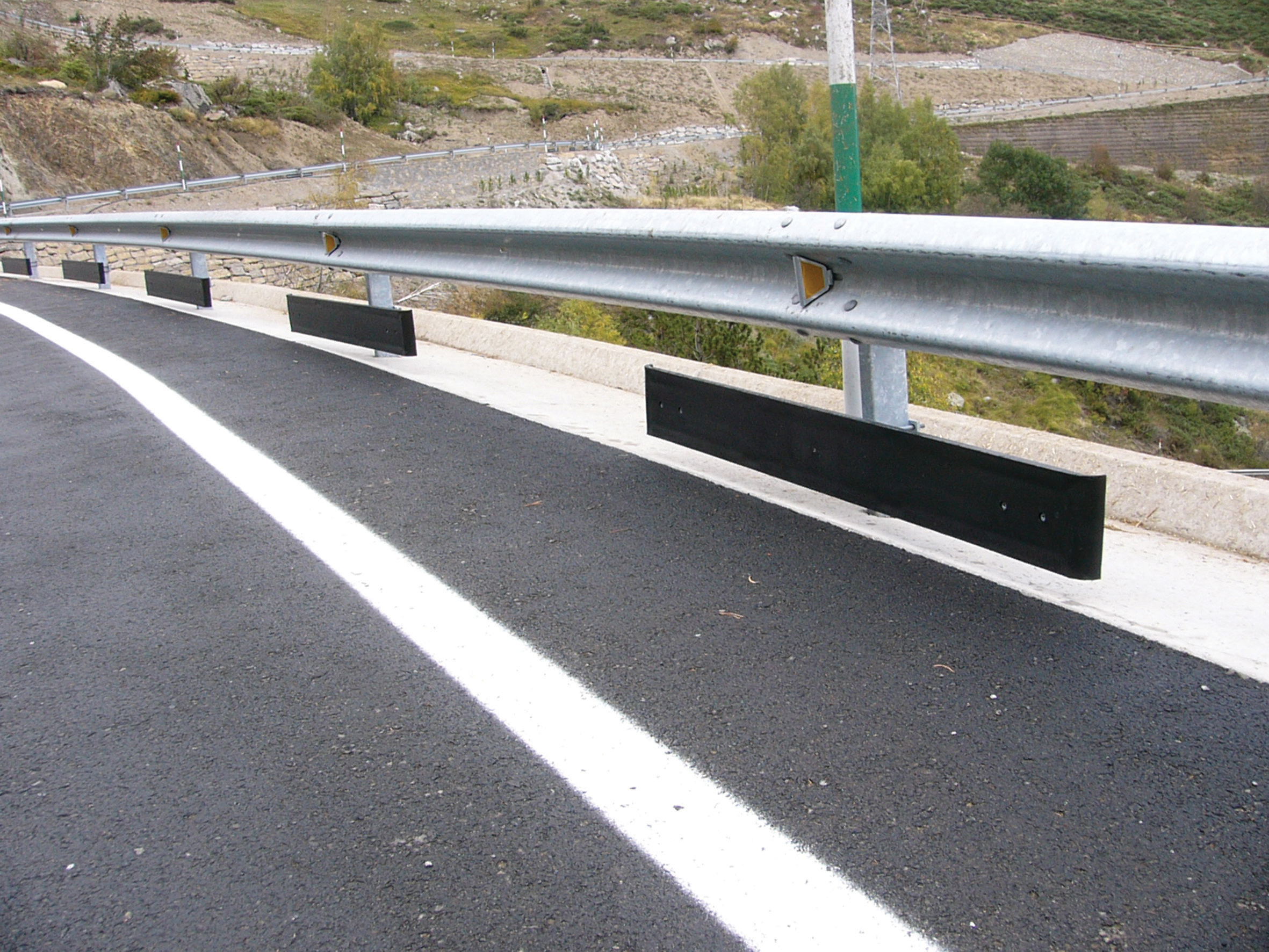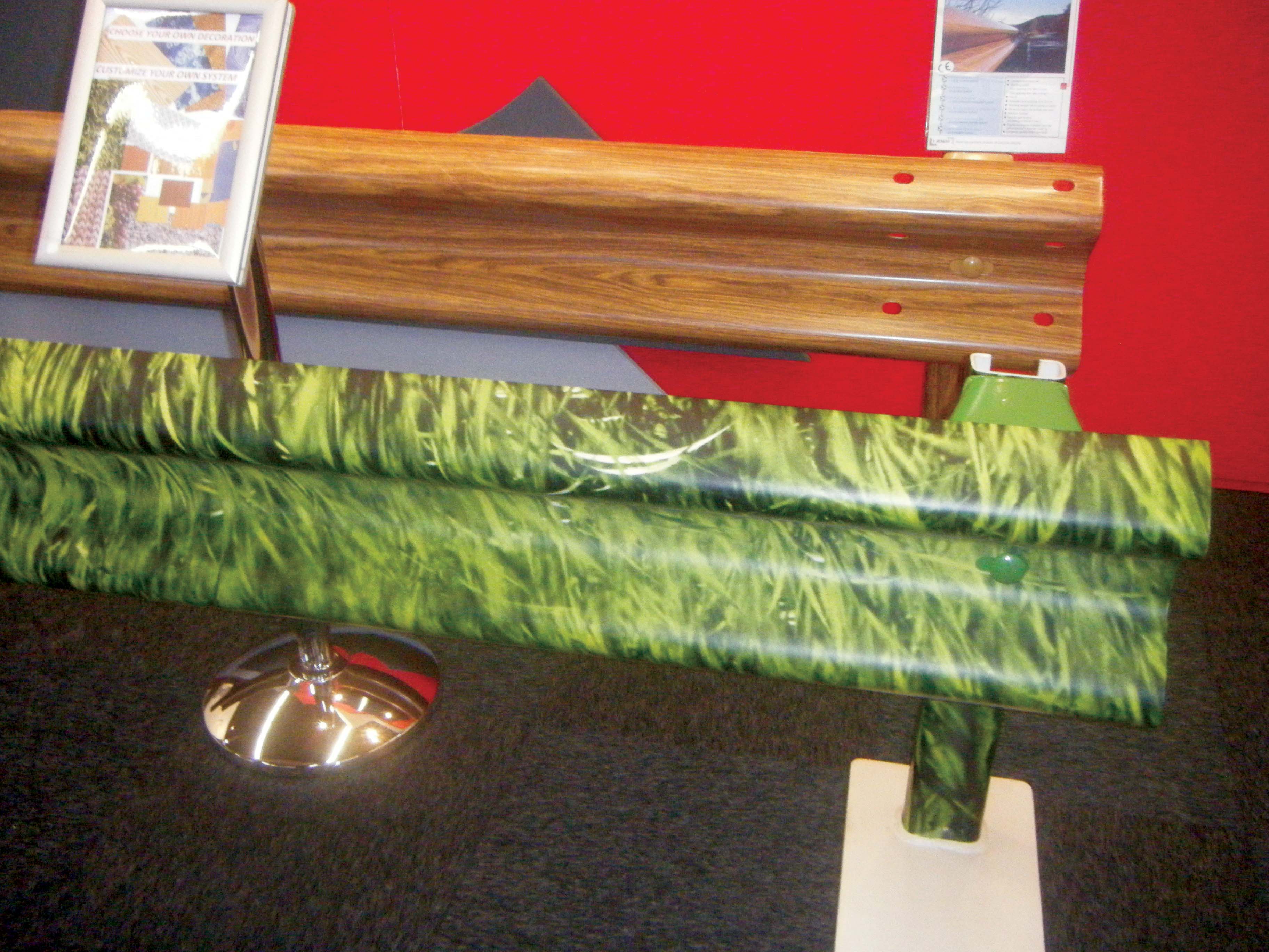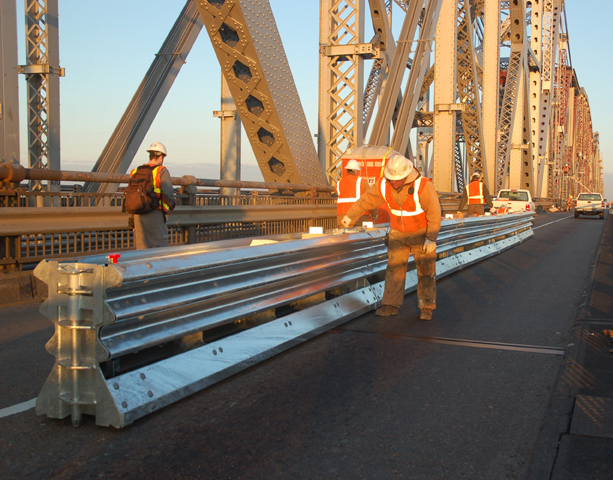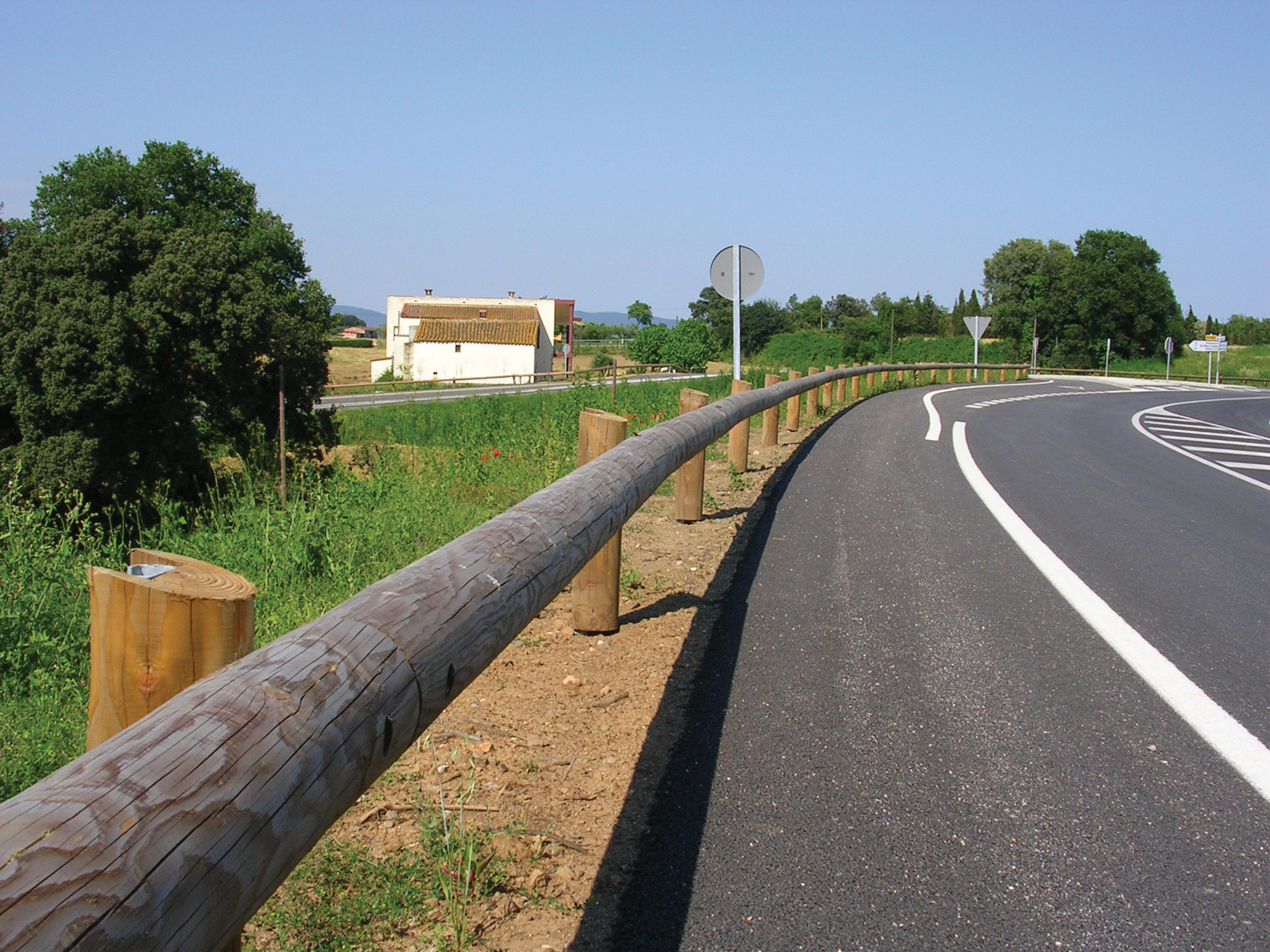Mike Dreznes, executive vice president at the International Road Federation (IRF) discusses the proper utilisation of longitudinal barriers as a road safety priority
Road authorities have a duty of care to ensure infrastructure not only meets safety requirements but provides protection for all road users. Crash barriers play an essential role in maximising safety, lowering the risk of sudden impact for road users and also allowing redirective capabilities.
If a road authority has a rigid hazard locate
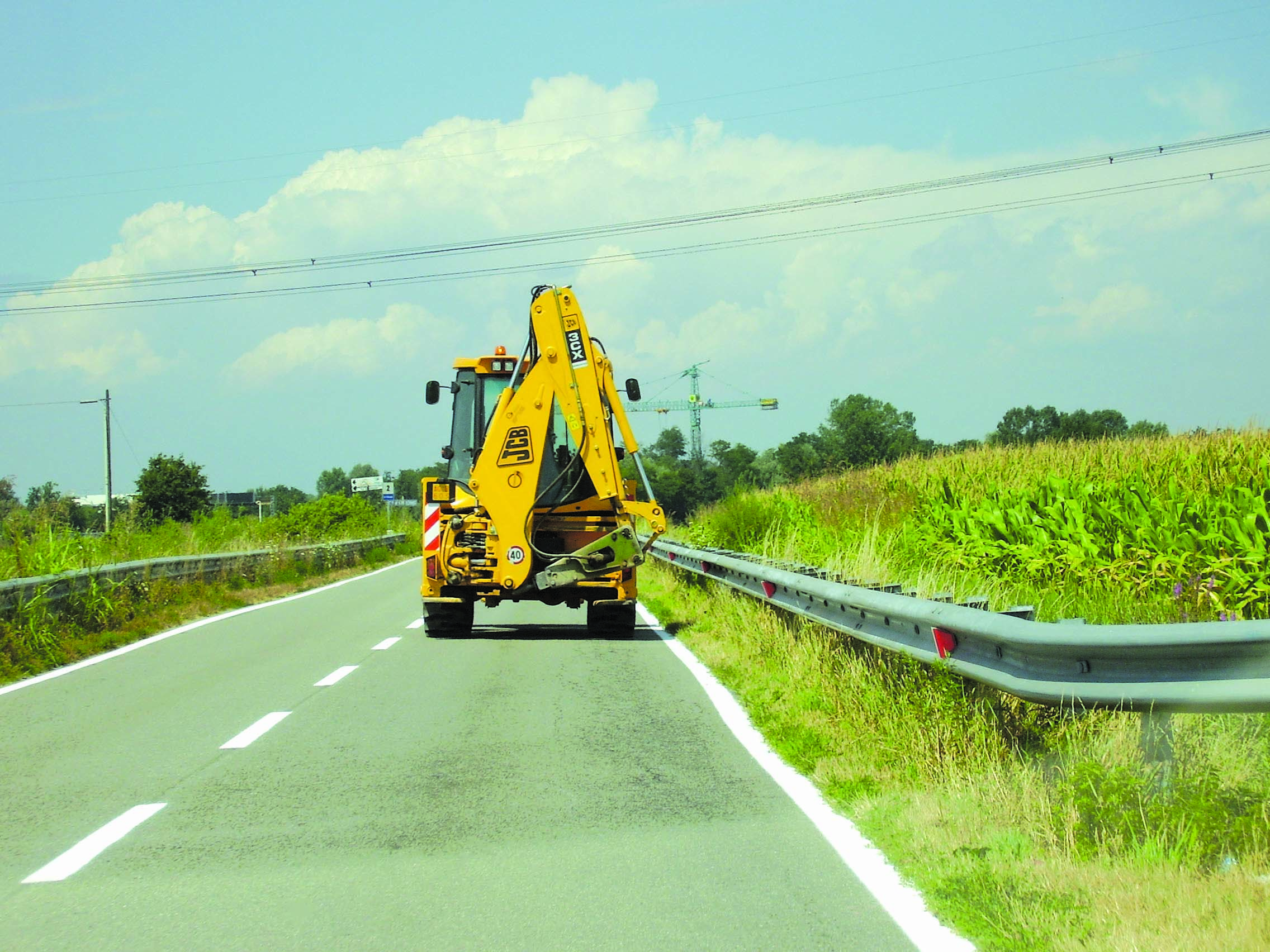
Roadside barriers should be specified correctly for the speed and weight of vehicles using a stretch of road
Mike Dreznes, executive vice president at the International Road Federation (3918 IRF Washington) discusses the proper utilisation of longitudinal barriers as a road safety priority
Road authorities have a duty of care to ensure infrastructure not only meets safety requirements but provides protection for all road users. Crash barriers play an essential role in maximising safety, lowering the risk of sudden impact for road users and also allowing redirective capabilities.
If a road authority has a rigid hazard located close to the road, it is necessary to take several steps in order to make that road safer. One option can be to simply eliminate the hazard by removing it entirely or to move the hazard back from the roadside to create a larger clear zone or recovery area for the motorist. It may be feasible to modify the hazard to make it less rigid such as using a forgiving pole, or to redesign the hazard so it can be safety traversed.
For some applications the most logical option is to shield the hazard with a longitudinal barrier or a crash cushion. But choosing the correct longitudinal barrier can be a life or death decision, and to make the right decision a specifier needs to understand certain criteria with regard to these products, and also have a clear understanding of the site specific conditions where this system is to be used.
Every longitudinal barrier must be properly crash tested, with the European and US requirements being the most widely recognised internationally and also accepted in some other markets. The International Road Federation (IRF) endorses the Resolution on Roadside Safety Hardware Harmonisation that was approved by the2774 Transportation Research Board’s AFB20 (2) Roadside Safety Design Subcommittee on International Research Activities on January 14, 2008.
The AFB20(2) Roadside Safety Design Subcommittee on International Research Activities recommends that road authorities in all countries should only specify roadside safety hardware that has met either US NCHRP 350 or European EN 1317 criteria (or their updates). The roadside safety hardware in this sense refers to includes longitudinal safety barriers, crash cushions, terminals and transitions
Permanent longitudinal barriers typically are made of concrete, steel or cables (wire rope), and there are sites that are more appropriate for one versus another. Longitudinal barriers can be categorised based on how much they deflect when they are impacted at an angle by a vehicle. These barriers are divided into three categories based on the deflection characteristics: rigid barriers, semi-rigid barriers and flexible barriers. Rigid barriers have the least deflection while flexible barriers offer the most deflection.
A site with minimum space or a steep slope behind the barrier may require the use of a rigid barrier, while a site with significant space with a flat slope behind the barrier may allow the use of a cable or wire rope barrier. This deflection will limit the type of barrier that can be used. Meanwhile transitions should be used to manage or control the deflection between different types of barriers.
An impact into a barrier that deflects is more likely to reduce the forces experienced by the occupants of a vehicle when compared to a rigid barrier, some of which may not deflect at all. It is logical to expect lower impact severity levels for occupants during a collision into a semi-rigid barrier than a rigid barrier. And in a similar vein, lower collision severity levels can be expected for occupants during an impact into a flexible barrier compared to a semi-rigid barrier.
A major consideration when choosing a barrier is cost. The installed initial cost of a properly tested site-specific concrete barrier will typically be about 10 times the cost of a properly tested site-specific cable or wire rope barrier (depending on post spacings). Meanwhile a properly specified concrete barrier will be around four times the cost of an equivalent site-specific post and beam steel barrier. However, every cost analysis should be based on life cycle cost, which can be defined as the cost to purchase and then to service and maintain the barrier during its life. A concrete barrier may require little or no maintenance after a design capacity impact, while a cable or wire rope barrier typically will require maintenance even after a smaller nuisance impact. The repair requirements for a steel barrier meanwhile will fall somewhere in between. Using an encroachment estimate model, a road authority can estimate how often a barrier will be impacted and using this, be able to estimate the whole life cycle cost.
A couple of other items must be taken into consideration when choosing a barrier too. For example, it is necessary to know the types of vehicles that will use the road to ensure a longitudinal barrier with the appropriate capacity is installed. In this respect the European EN1317-2 and the United States NCHRP350 or MASH have different testing categories for longitudinal barriers. Some longitudinal barriers have been tested with vehicles weighing up to 38tonnes, while others have been tested with a maximum test vehicle weight of 1.3tonnes.
In addition, aesthetics may be a consideration as can compatibility with existing barriers. Maintenance shops understandably prefer to be responsible for a more limited range of barriers to reduce repair inventory requirements and to ensure knowledge of the product for proper installation and maintenance. It is worth noting that proper training for installation and maintenance is critical to the proper, safe performance of any longitudinal barrier.
One other point is of note with regard to longitudinal barriers. A proper crashworthy and tested end treatment is needed on the approach or upstream end of the barrier. Similarly, a properly tested transition may also be required on the downstream or departure end of the longitudinal barrier.
Meanwhile both ends of the barrier must be anchored while the ends that are within the clear zone must be made crashworthy if impacted end-on by an errant vehicle. Common sense and physics both dictate that a transition is required when a barrier with one set of deflection characteristics is joined to a barrier with different deflection characteristics. Without this transition, an errant vehicle could impact a semi-rigid barrier which would deflect and redirect the vehicle right into the blunt end of the rigid barrier. Transitions are clearly necessary and are inexpensive, with many options to choose from. However, very few countries in the world currently require these transition sections, which is a clear failure of safety policy. Why this lack of a requirement for transition units to be used remains in some countries is unclear.
The use of proper longitudinal barriers will make roads safer and help road authorities meet the3263 World Health Organisation’s Decade of Action for Road Safety challenge to reduce fatalities and serious injuries on the roads. It is the road authority’s responsibility to understand the site conditions where the barrier will be used as well as the performance and life cycle cost characteristics of a longitudinal barrier to make the right choice for all road users.
The IRF conducts Safer Roads by Design Training Programmes around the world. Proper selection and use of longitudinal barriers plus transitions and crashworthy terminals, as well as a variety of other Roadside Safety, Work Zone Safety, Vulnerable User Safety and Road Safety Audit topics are discussed in detail at these training programmes.
Road authorities have a duty of care to ensure infrastructure not only meets safety requirements but provides protection for all road users. Crash barriers play an essential role in maximising safety, lowering the risk of sudden impact for road users and also allowing redirective capabilities.
If a road authority has a rigid hazard located close to the road, it is necessary to take several steps in order to make that road safer. One option can be to simply eliminate the hazard by removing it entirely or to move the hazard back from the roadside to create a larger clear zone or recovery area for the motorist. It may be feasible to modify the hazard to make it less rigid such as using a forgiving pole, or to redesign the hazard so it can be safety traversed.
For some applications the most logical option is to shield the hazard with a longitudinal barrier or a crash cushion. But choosing the correct longitudinal barrier can be a life or death decision, and to make the right decision a specifier needs to understand certain criteria with regard to these products, and also have a clear understanding of the site specific conditions where this system is to be used.
Every longitudinal barrier must be properly crash tested, with the European and US requirements being the most widely recognised internationally and also accepted in some other markets. The International Road Federation (IRF) endorses the Resolution on Roadside Safety Hardware Harmonisation that was approved by the
The AFB20(2) Roadside Safety Design Subcommittee on International Research Activities recommends that road authorities in all countries should only specify roadside safety hardware that has met either US NCHRP 350 or European EN 1317 criteria (or their updates). The roadside safety hardware in this sense refers to includes longitudinal safety barriers, crash cushions, terminals and transitions
Permanent longitudinal barriers typically are made of concrete, steel or cables (wire rope), and there are sites that are more appropriate for one versus another. Longitudinal barriers can be categorised based on how much they deflect when they are impacted at an angle by a vehicle. These barriers are divided into three categories based on the deflection characteristics: rigid barriers, semi-rigid barriers and flexible barriers. Rigid barriers have the least deflection while flexible barriers offer the most deflection.
A site with minimum space or a steep slope behind the barrier may require the use of a rigid barrier, while a site with significant space with a flat slope behind the barrier may allow the use of a cable or wire rope barrier. This deflection will limit the type of barrier that can be used. Meanwhile transitions should be used to manage or control the deflection between different types of barriers.
An impact into a barrier that deflects is more likely to reduce the forces experienced by the occupants of a vehicle when compared to a rigid barrier, some of which may not deflect at all. It is logical to expect lower impact severity levels for occupants during a collision into a semi-rigid barrier than a rigid barrier. And in a similar vein, lower collision severity levels can be expected for occupants during an impact into a flexible barrier compared to a semi-rigid barrier.
A major consideration when choosing a barrier is cost. The installed initial cost of a properly tested site-specific concrete barrier will typically be about 10 times the cost of a properly tested site-specific cable or wire rope barrier (depending on post spacings). Meanwhile a properly specified concrete barrier will be around four times the cost of an equivalent site-specific post and beam steel barrier. However, every cost analysis should be based on life cycle cost, which can be defined as the cost to purchase and then to service and maintain the barrier during its life. A concrete barrier may require little or no maintenance after a design capacity impact, while a cable or wire rope barrier typically will require maintenance even after a smaller nuisance impact. The repair requirements for a steel barrier meanwhile will fall somewhere in between. Using an encroachment estimate model, a road authority can estimate how often a barrier will be impacted and using this, be able to estimate the whole life cycle cost.
A couple of other items must be taken into consideration when choosing a barrier too. For example, it is necessary to know the types of vehicles that will use the road to ensure a longitudinal barrier with the appropriate capacity is installed. In this respect the European EN1317-2 and the United States NCHRP350 or MASH have different testing categories for longitudinal barriers. Some longitudinal barriers have been tested with vehicles weighing up to 38tonnes, while others have been tested with a maximum test vehicle weight of 1.3tonnes.
In addition, aesthetics may be a consideration as can compatibility with existing barriers. Maintenance shops understandably prefer to be responsible for a more limited range of barriers to reduce repair inventory requirements and to ensure knowledge of the product for proper installation and maintenance. It is worth noting that proper training for installation and maintenance is critical to the proper, safe performance of any longitudinal barrier.
One other point is of note with regard to longitudinal barriers. A proper crashworthy and tested end treatment is needed on the approach or upstream end of the barrier. Similarly, a properly tested transition may also be required on the downstream or departure end of the longitudinal barrier.
Meanwhile both ends of the barrier must be anchored while the ends that are within the clear zone must be made crashworthy if impacted end-on by an errant vehicle. Common sense and physics both dictate that a transition is required when a barrier with one set of deflection characteristics is joined to a barrier with different deflection characteristics. Without this transition, an errant vehicle could impact a semi-rigid barrier which would deflect and redirect the vehicle right into the blunt end of the rigid barrier. Transitions are clearly necessary and are inexpensive, with many options to choose from. However, very few countries in the world currently require these transition sections, which is a clear failure of safety policy. Why this lack of a requirement for transition units to be used remains in some countries is unclear.
The use of proper longitudinal barriers will make roads safer and help road authorities meet the
The IRF conducts Safer Roads by Design Training Programmes around the world. Proper selection and use of longitudinal barriers plus transitions and crashworthy terminals, as well as a variety of other Roadside Safety, Work Zone Safety, Vulnerable User Safety and Road Safety Audit topics are discussed in detail at these training programmes.



